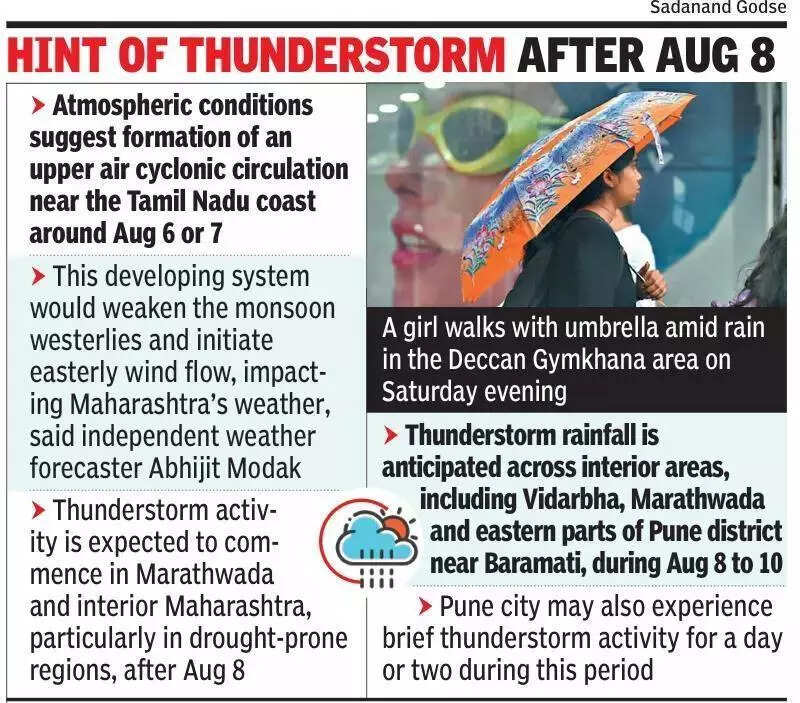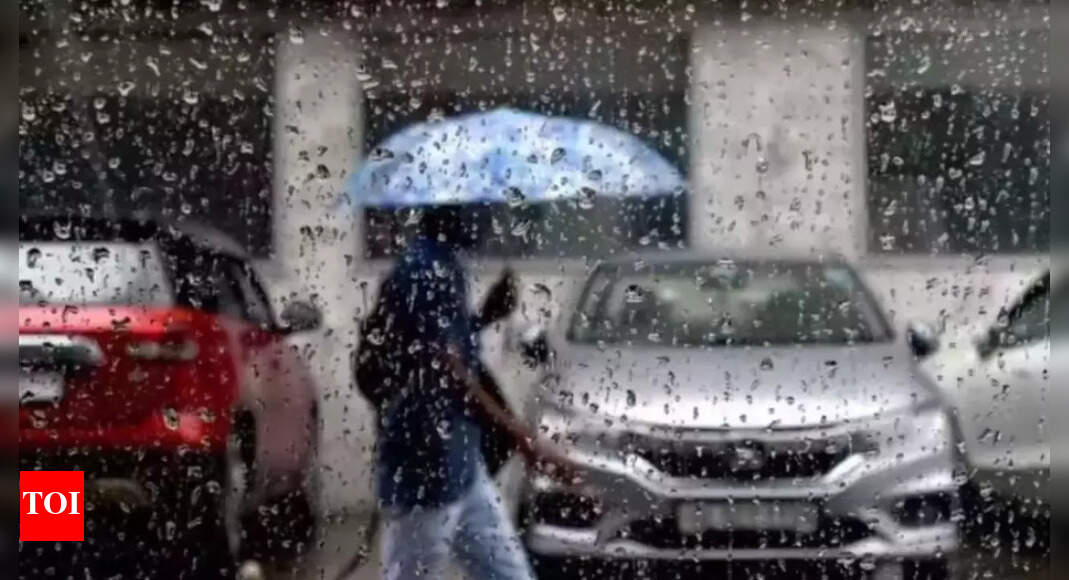PUNE: Monsoon is not going to restore in central India, together with Maharashtra, for a minimum of the following 10 days.The prolonged vary forecast indicated that the continuing vulnerable monsoon prerequisites would persist for the following two weeks around the core monsoon zone, a senior authentic of India Meteorological Division (IMD) mentioned on Saturday. Whilst central India and Maharashtra will enjoy under customary rainfall, south peninsular India is prone to witness a monsoon revival. Just right rainfall process is predicted there, specifically in Tamil Nadu, south Karnataka and Kerala, all over the following few days.“The central Indian area and portions of Maharashtra — a part of the core monsoon zone — are not going to look monsoon revival in the following few days,” any other senior IMD authentic mentioned. He mentioned the monsoon trough had moved to the north of its customary place, ensuing within the weakening of monsoon process over the core monsoon zone. When the monsoon trough shifts northward from its customary place, it disrupts the standard go with the flow of moisture-laden winds from the Arabian Sea and the Bay of Bengal in opposition to central India and Maharashtra.This northward displacement reasons the trough to align nearer to the foothills of the Himalayas, the place the topography and atmospheric dynamics favour rainfall within the northern plains and northeastern states, leaving the core monsoon zone fairly dry.Every other IMD authentic mentioned, “Monsoon over the south peninsular India is prone to revive after Aug 6. The monsoon trough is prone to proceed in opposition to north, with reference to the foothills, within the subsequent two weeks. So there is no likelihood of monsoon revival for central India, together with maximum portions of Maharashtra, for the following two weeks.”Impartial climate forecaster Abhijit Modak mentioned, “The monsoon entered a smash section from Aug 1. It’s going to persist all over the primary part of the month. Revival possibilities emerge in the second one part of Aug.”He mentioned, “Monsoon habits follows a cyclical development. Lively stages change with smash stages in wave-like sequences. After experiencing an lively monsoon all over the latter part of July, we are actually witnessing a smash section, the place the monsoon trough has displaced northward to the Himalayan foothills.” Modak mentioned, “This northward shift of the monsoon trough creates smash prerequisites over core monsoon zone as no lively climate methods recently exist over the Bay of Bengal. Right through this section, monsoon winds weaken and dry air intrusion from the Middleeast establishes smash monsoon prerequisites over portions of central India.”

.
He mentioned, “The lively monsoon section is prone to resume round Independence Day. Previous to this revival, atmospheric prerequisites recommend formation of an higher air cyclonic flow close to the Tamil Nadu coast round Aug 6 or 7.” Modak mentioned, “This creating machine will weaken the monsoon westerlies and start up easterly wind go with the flow, impacting Maharashtra’s climate. Thunderstorm process is predicted to start in Marathwada and inner Maharashtra, specifically in drought-prone areas, with larger likelihood after Aug 8.” He mentioned, “Thunderstorm rainfall is expected throughout inner spaces, together with Vidarbha, Marathwada and jap portions of Pune district close to Baramati, all over Aug 8 to ten. Pune town may additionally enjoy temporary thunderstorm process for an afternoon or two all over this era.” Modak mentioned, “Wreck monsoon dynamics range considerably from lively stages. Whilst lively monsoons generate methods close to the Odisha or West Bengal coast, smash prerequisites want formation of secondary higher air cyclonic circulations close to the Tamil Nadu or Andhra Pradesh coast or the Rayalaseema area, therefore triggering thunderstorm construction over Maharashtra. Those thunderstorms showcase scattered, remoted traits with localized heavy rainfall. Rain-shadow spaces in Maharashtra, that most often obtain minimum precipitation of 10-20mm, can enjoy intense downpours of 50-70mm inside brief intervals all over thunderstorm episodes.”

